What are LED Strip Lights?
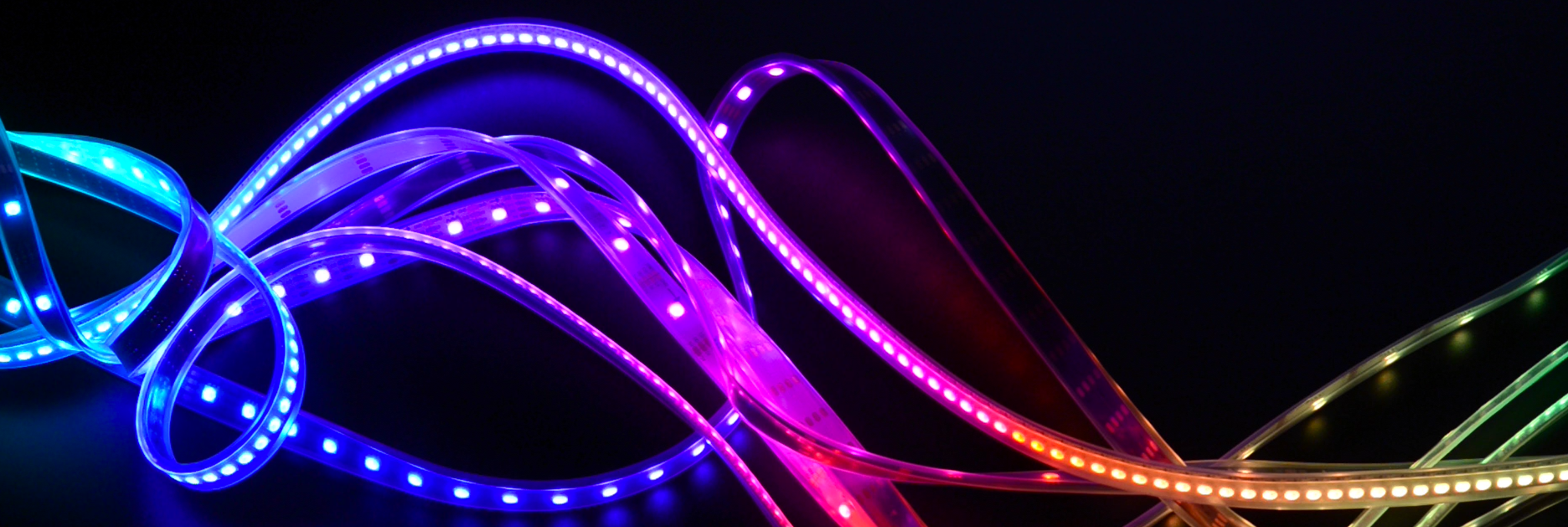
LED strip lights are a series of LED (light emitting diodes) attached to a flexible rubber or plastic strip and connected through printed copper traces. Strip lights use low-power LEDs spread over a long distance to emulate the brightness of a larger high-power LED.
A 5-meter-long LED strip will have the same power consumption as a small floodlight, around 24 watts. The only difference is that the floodlight has a directional light beam that originates from one point. In contrast, the LED strip light has a non-directional beam coming from multiple points on the strip.
This spread-out LED design limits the conventional applications of LED strip lights. However, this design also opens new opportunities because of its unique flexible strip backing.
Benefits of LED Strip Lights
LED strip lights have shot up in popularity over the last few years. More and more people are opting to use LED strip lights as mood lighting. The popularity of strip lights can be directly linked to their unmatched design flexibility. The following are a few crucial factors contributing to the importance of LED strip lights.
Versatile
A LED strip light is one of the few light fixtures used for indoor and outdoor lighting. It can be deployed in almost any environment due to its unique construction. Here are some typical applications of LED strip lights.
- Can be used to outline objects and surfaces for accent lighting.
- Can be mounted along ceiling edges to provide soft mood lighting.
- Can be stylistically shaped into and mounted as wall art.
Safe
LED strip lights are incredibly safe to handle and install. The biggest reason for this is their relatively low power supply requirements. Most LED strips run on 12v DC, but you can get 5v LED strip lights. Additionally, the power supply will only need to supply current according to the length of the LED strip light.
Most reputable lighting suppliers provide a wattage per foot (or meter) specification with their LED strip lights. A standard power rating for a LED strip light is 4.8W/m or 1.46W/ft. The lower power consumption decreases the barrier to entry, meaning you don’t need the supervision of an electrical contractor to install LED strips in your house.
Small Footprint
Its tiny footprint is the most prominent element of a LED strip light. It is a slim, flexible light fixture that can easily be rolled up for convenient storage. Although from a volume perspective, an LED strip light will occupy the same space as most LED lights. LED strip lights compromise on length to reduce their height and width.
Additionally, LED lights have their power supply incorporated into the fixture design, leading to a bulkier shape. In comparison, LED strip lights have an external power supply.
Easy to Install
Installing LED strip lights is one of the more accessible lighting projects. A standard installation involves mounting LED strip lights to a surface using mounting clips, adhesive backing, or aluminum channels.
The power supply for most LED strip lights comes in the form of a 12v adapter that plugs directly into the wall. More complex lighting designs may require cutting and soldering LED strips together. But even that is a generally easy-to-manage ordeal.
Customizable
You can customize almost every aspect of an LED strip light. The length is the easiest to modify as it is as simple as cutting between two LEDs and along the conductive contacts. Other elements like brightness, color temperature, voltage, and design can all be individually changed to accommodate your lighting needs.
Different Types of LED Strip Lights
LED strip lights come in several varieties, each designed to cater to a specific market. The difference between these LED strips can range from small to massive. The following is a breakdown of the different types of LED strip lights and their applications.
Standard 12v
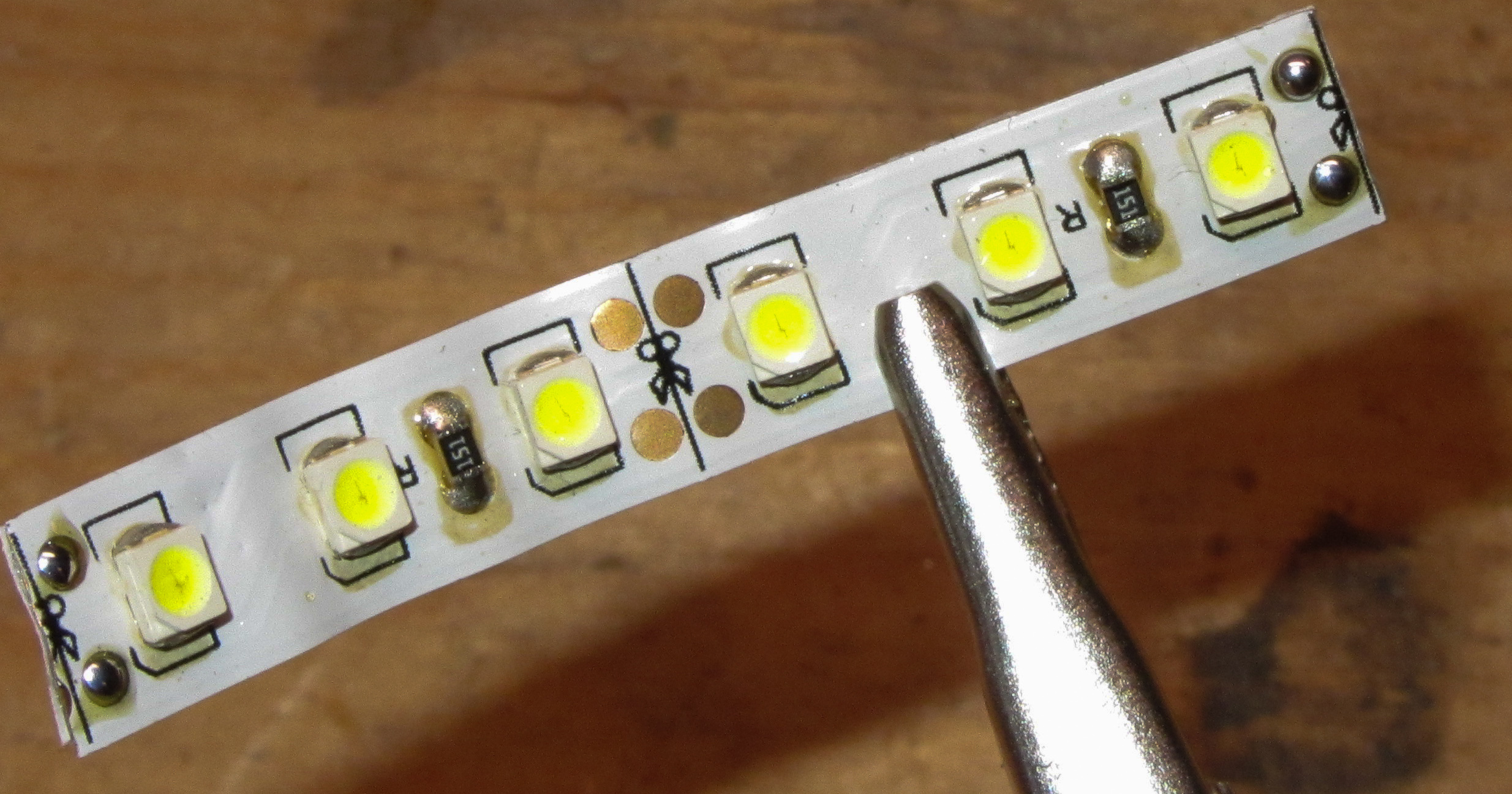
Standard LED strip lights run on a 12v DC power supply. This is the most common type of LED strip light available commercially and is compatible with most lighting designs. Standard density LED strips to have roughly 10 LEDs per foot and have a maximum length of 16 ft.
The length limitations are due to the electronic restriction. You will see a voltage drop when using DC LED flex strips, as the thin wires cannot meet the power demands.
High-Density 24v
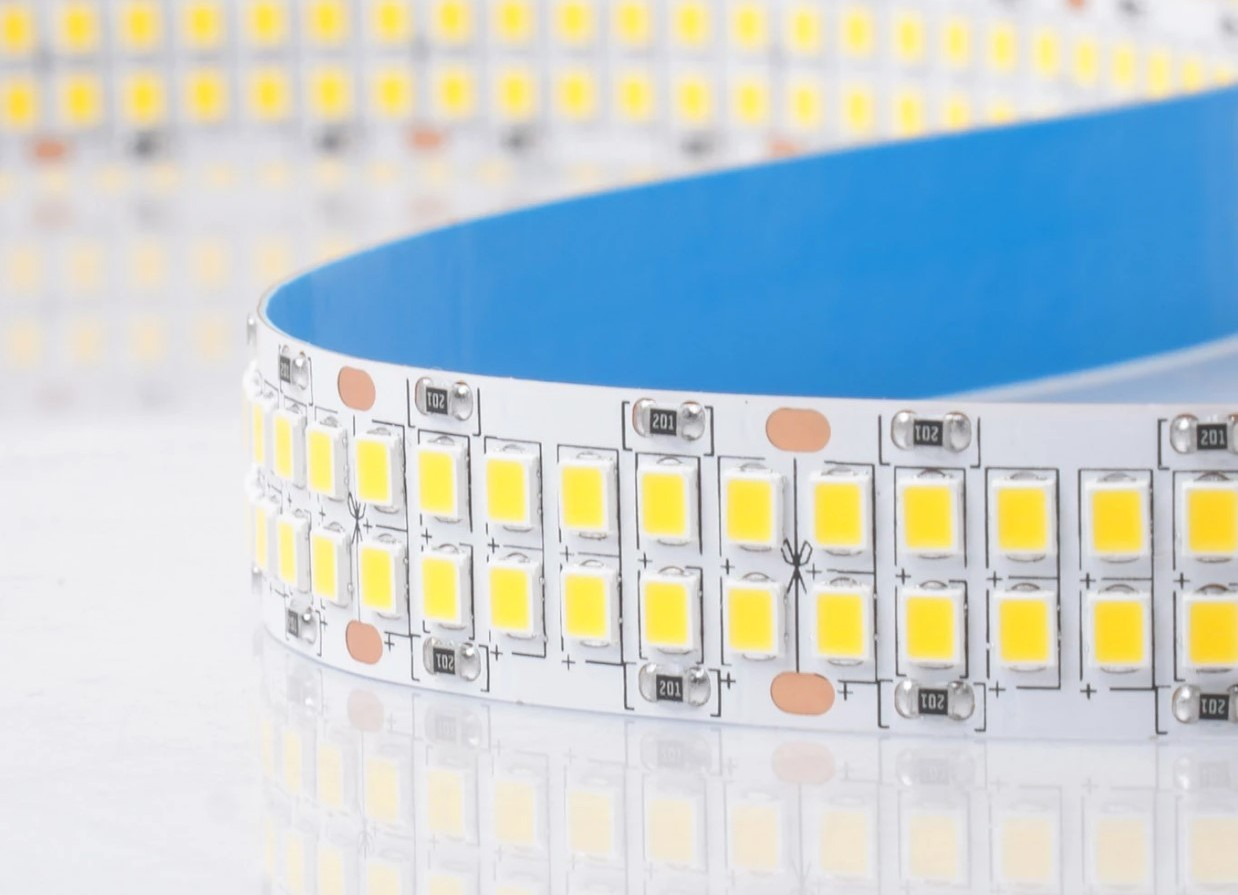
High-density LED strips run on 24v as they have twice the number of LEDs per foot. 24v strips are rarely used as the brightness benefits do not justify the power consumption. 24-volt power supply units are also more expensive than the more common 12v variants.
The more significant number of LEDs per foot leads to higher brightness and consumes twice the power. An alternative to 24v high-density strips is 24v standard-density strips. They take the added voltage and use it to increase the overall length of the flexible strip up to 32ft.
COB LED Strips
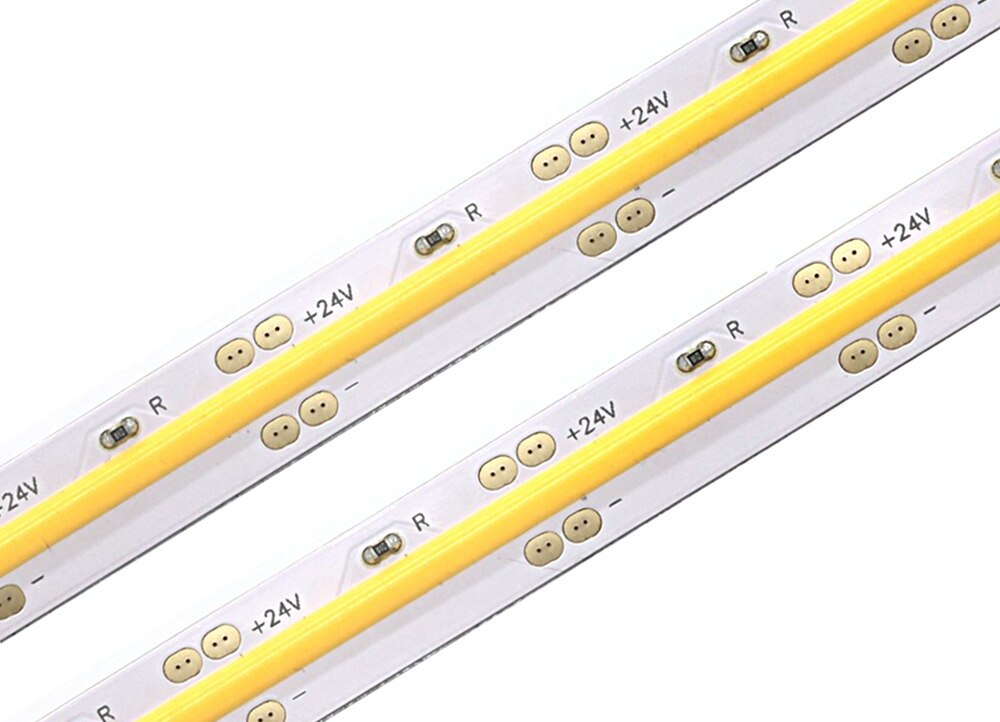
COB stands for (Circuit on Board), and it uses a different manufacturing technique to directly bond the LEDs to the flexible strip instead of installing individual units on the strip at set distances. Standard LED strips are called SMD LED strip lights.
COB LED lights have a uniformly thin profile that leads to more diffused and even lighting. Other than a few visual and luminance variations, COBs and SMDs operate similarly and are even interchangeable.
AC LED Strips
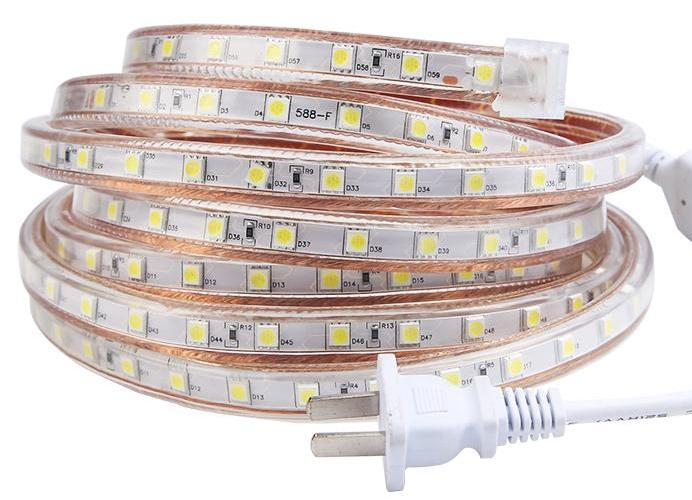
AC LED strips are more convenient and versatile than their DC counterparts. Unlike DC LED strips, you can directly power your AC from the wall using 120 or 240v. This further reduces the barrier to entry as the LED strip lights now have one less element to consider.
AC-powered LED strips are an excellent option for large-scale lighting projects, as they can support much larger lengths. A standard AC LED strip light can support a ridiculous length of up to 150ft.
LED Rope Light
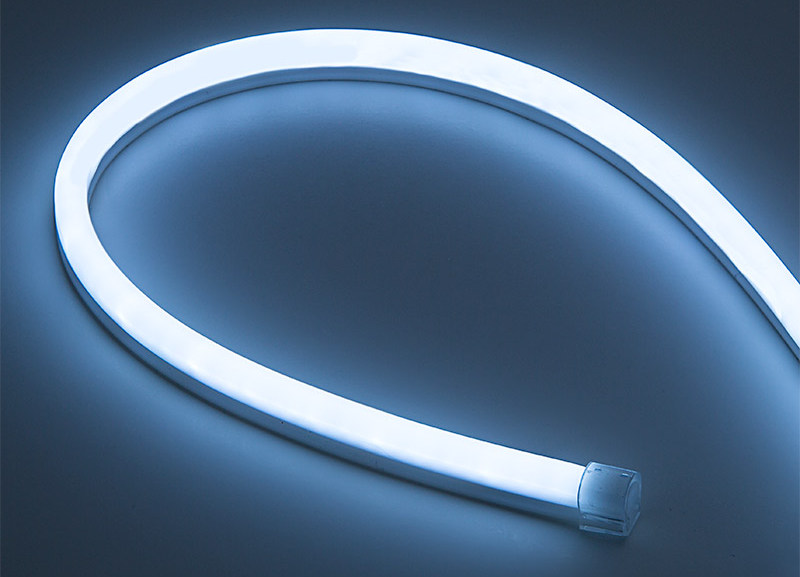
A LED Rope Light is just a regular standard LED strip light encased in flexible tubing that evenly disperses the light. The tube casing is typically made of a plastic or epoxy base and is meant to provide environmental protection to the LED strips.
Rope lights can have AC and DC variants since the power supply depends on the base LED strip. LED rope lights are an excellent option for outdoor lighting as the protective casing is waterproof.
Miscellaneous

There are a few more types of LED strip lights, but ones that are less commonly used.
- Rigid LED strip lights have a more complex backing that makes installation easier.
- Double-width strip lights have two rows of LEDs per foot for increased brightness.
- Wide LED strips with better power delivery are built into them for increased longevity.
- Magnetic LED light strips are designed for toolless installation onto metal surfaces.
07 Things to Consider Before Buying LED Strip Lights
The field of LED strip lighting is quite diverse, and there are several vital factors you need to consider before buying LED strip lights. Each of these factors will help you narrow down the specifications of your required LED strip lights.
- Color Temperature

Color temperature is a metric used to measure a light source’s slight difference in hues. It is measured in Kelvin (K) and ranges from 1,000 to 10,000. Lower Kelvin values referred to a warmer red-yellow hue to the light. While at higher Kelvin values, light appears with a cooler blue-ish hue.
Color temperatures can have a significant effect on your mood lighting. Cooler temperature lights create a more focused and clear environment. In contrast, warmer temperature lights create a cozy, comfortable, and relaxing environment. A value of approximately 5,000K represents the color of natural sunlight.
- Color Rendering Index
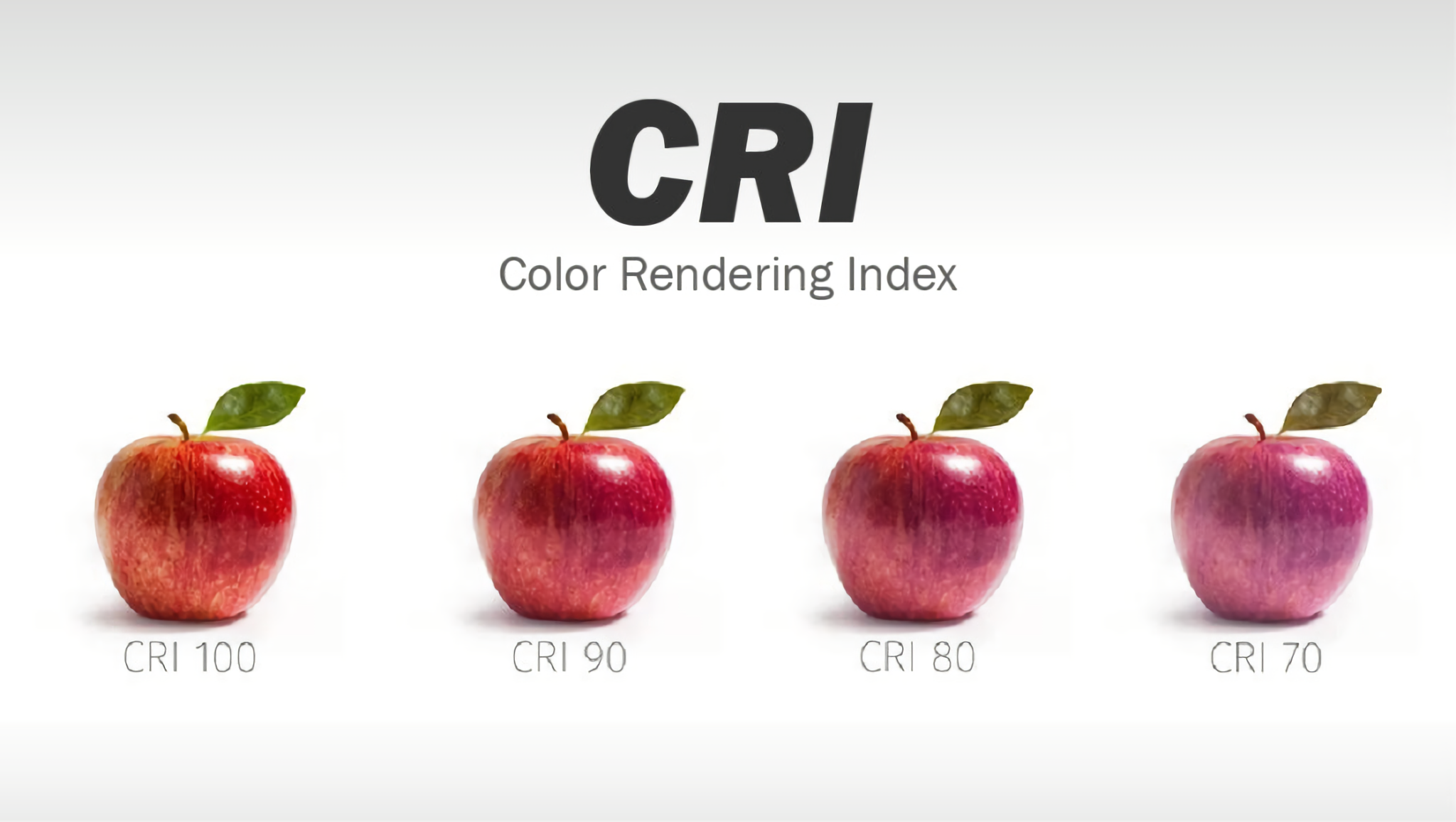
Objects appear to have a slightly different colors under different lighting conditions. The color rendering index (CRI) is a means to measure the color accuracy of a light source. CRI rates light sources on a scale of 1 to 100, with 100 being the most color-accurate and representing natural sunlight.
For a professional working environment, color accuracy is an essential element. Investment in high CRI LED strips will prove beneficial in the long run. As you can assume, high CRI LEDs are significantly more expensive and often more difficult to source.
- RGB LED Strip Lights
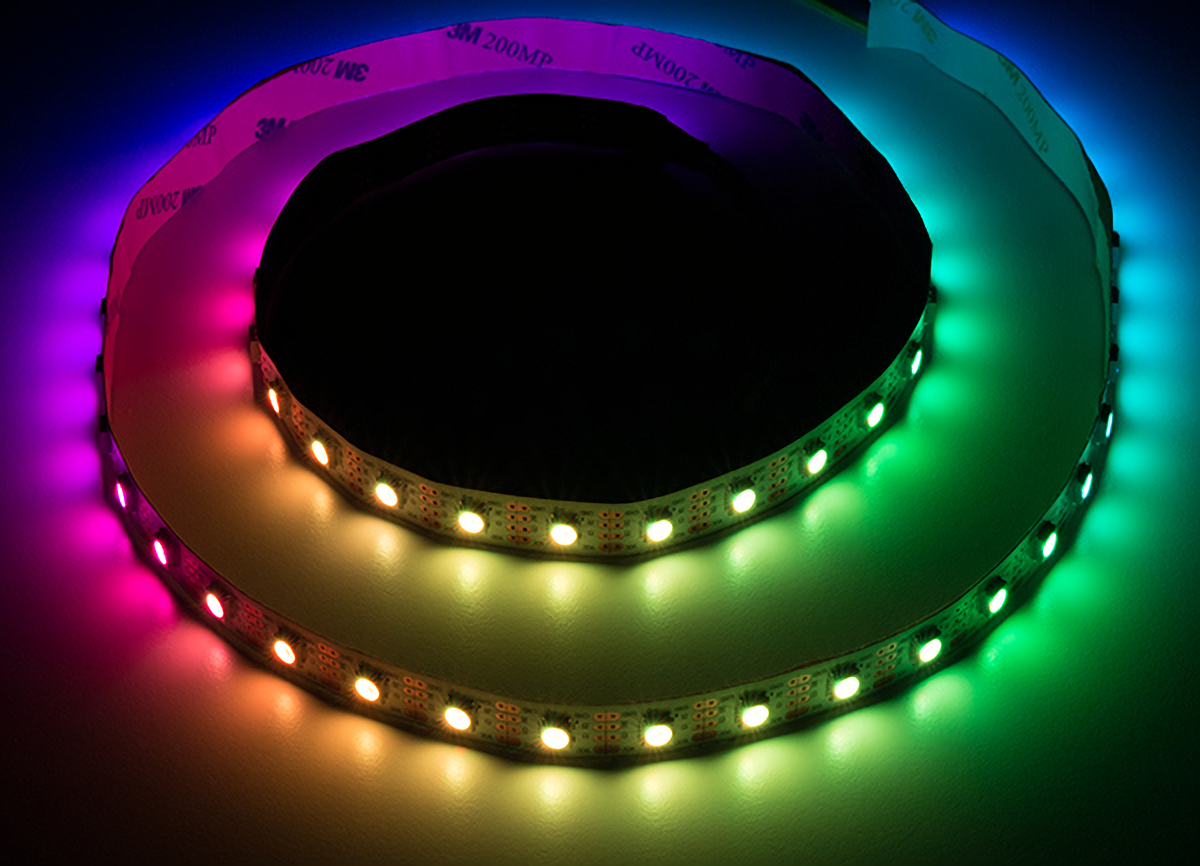
White LED strip lights are more widely used in general accent lighting. But RGB LED strip lights have slowly become more dominant in the accent lighting space. RGB (red, green, blue) LED lights can dynamically change between the three color types for near-infinite combinations.
RGB strip lights operate similarly to regular strip LEDs, except they have four wires that control the light’s color. RGB LED strip lights are similar in cost to regular white LED strips, making them quite attractive.
- Waterproof LED Strip Lights
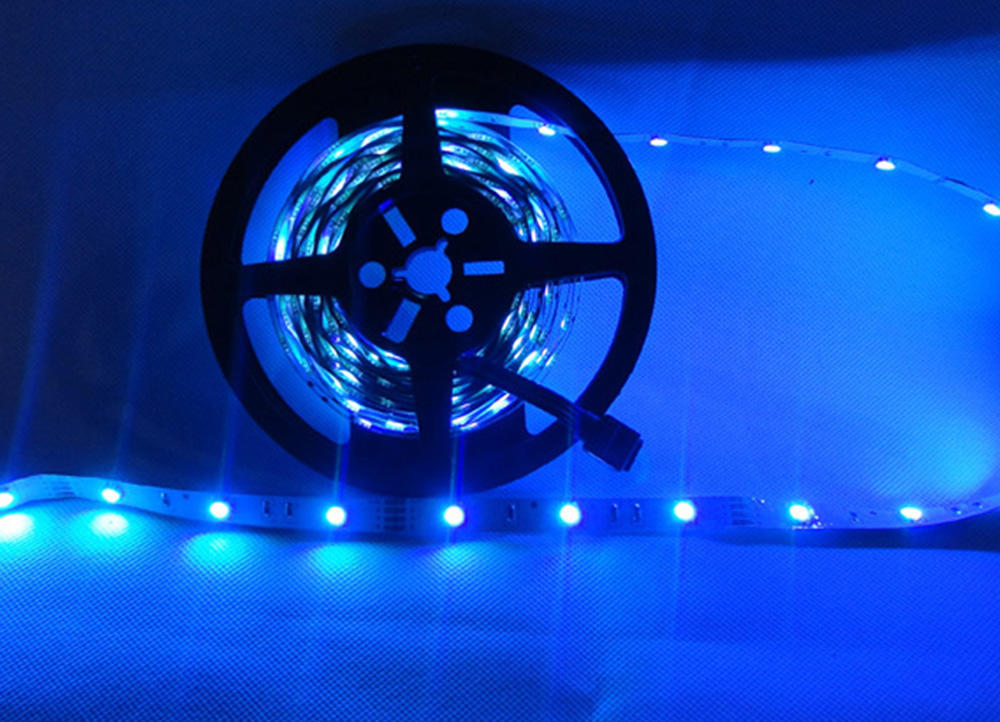
Basic LED strip lights are meant for indoor use and don’t have high-performance requirements. These low-cost products often can’t justify the extra expense of weatherproofing.
However, specialized LED strip lights for outdoor use come with standard water protection. They will come at a slightly higher cost, but it is a relatively small price to pay for environmental protection. They are usually used for facade lighting and landscape lighting projects.
- Brightness Considerations
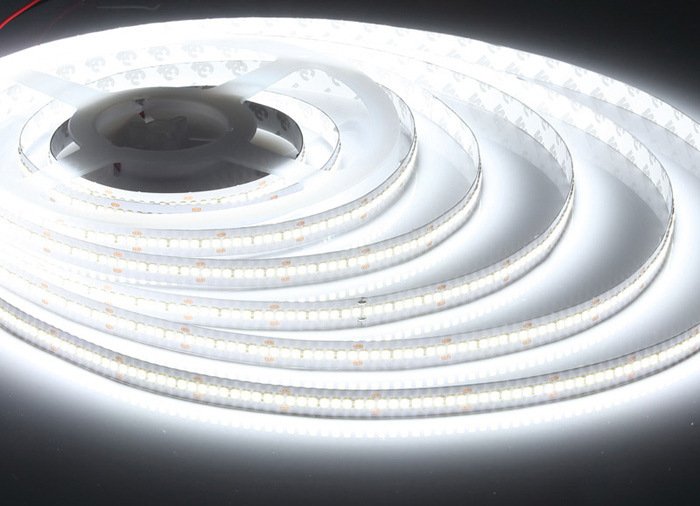
LED strip lights have a quality problem. As a low-cost product, several cheaper variations are available on the market. These cheaper alternatives come with low-quality electronics that cannot support higher wattages. So they lower the overall brightness of the LED strip lights to avoid damage.
LED strip lights run at low wattages, so the potential for burnout or damage over time is negligible. But running cheaper LEDs over the specified wattage to get a higher brightness will destroy your LED lights.
Even when LED strip lights are rated for higher brightness, they have a thermal limitation. Hot environments or poorly ventilated spaces will result in quick temperature increases.
- Cutting LED Strips
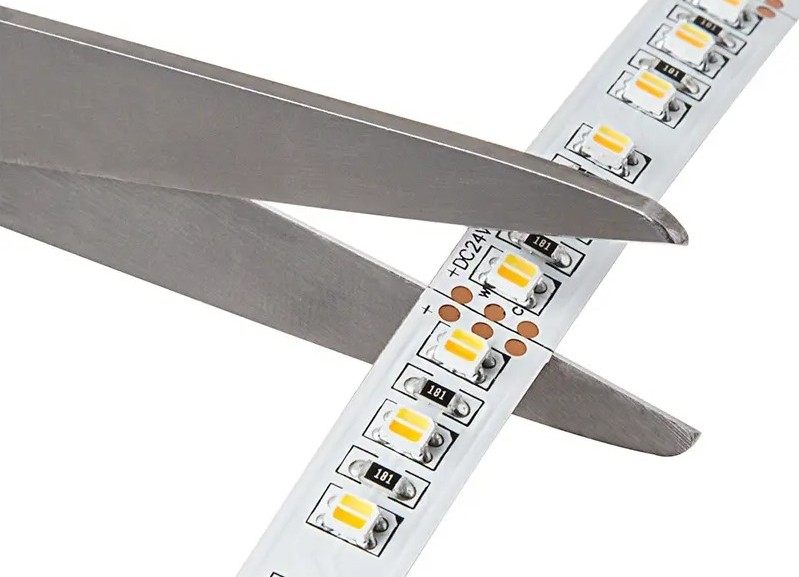
LED strip lights are sold in roll switch standard lengths. Adapting a 5 or 10m long LED strip to your lighting design will require cutting and re-soldering the strips. Luckily manufacturers have thought of this problem, and all quality light strips come with cut marks.
Using scissors, LED strip lights can be terminated along these cut marks (Conductive contacts). Extending LED strips requires you to solder wires to these same cut marks.
- Smart Controlled LED Strip Lights
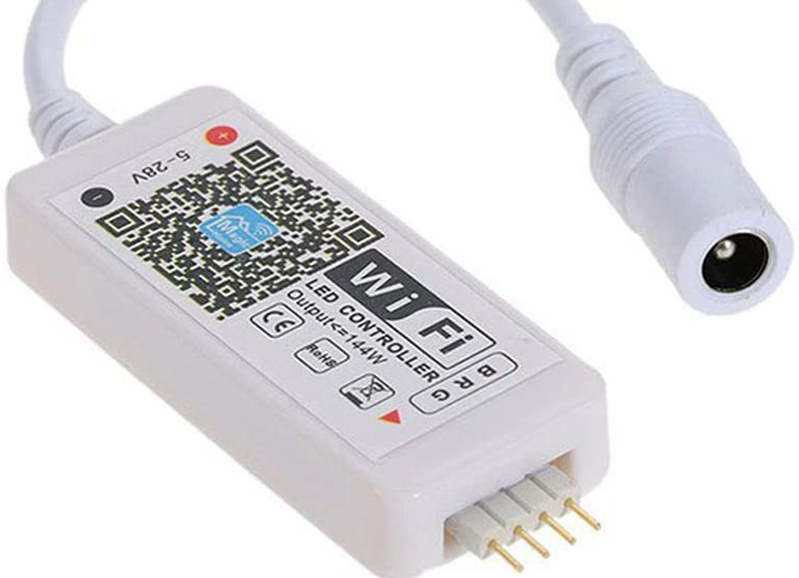
Another significant element of LED strip lights is their smart control features. LED strip lights have a few smart lighting solutions. The easiest one involves attaching an IR receiver at the termination end of the LED strip. The IR receiver will take instructions from a remote controller and adjust the brightness and colors of the strip lights accordingly.
More advanced lighting controls involve using smart RGB controllers to add dynamic lighting effects to your LED strip lights. This type of lighting control is quite common in RGB LED lights commonly used for computer hardware.
Easy-to-Follow LED Strip Light Installation Guide
Installation of LED strip lights is a relatively straightforward process with few steps. But adding a few extra steps for more professional lighting setups will result in a better aesthetic.
Step 1 – Outlining a Path for Strip Lights
LED strip lights require you to carefully plan a route before proceeding further. The idea is to use a single continuous LED strip and fold and bend it according to the application. A good start for this step is to consider the placement of your power supply and route the LED strip.
Step 2 – Calculating Power Supply Requirements
Once you know the total length of the LED strip lights, you can estimate the power costs. Give your power supply a 10-20% headroom for unforeseen surges in power. Always use a high-quality power supply to avoid accidents.
If you under-spec your power supply, you will have less bright light due to a lack of current flowing through the led light strip.
Step 3 – Cleaning Mounting Surface
There are two important reasons to clean your mounting surface. The first is to remove any unwanted bumps and dents. LED light strips will make surface imperfections more noticeable.
The second reason is to have a clean surface for better adhesive contact. Most LED light strips have an adhesive backing for quick and easy installation. These adhesive LED strips are convenient but often have sticking issues on unclean and uneven surfaces.
Step 4 – Attaching LED Strip Lights
Attaching LED light strips is the most complex and challenging process. One can take several approaches to attach (or mount) an LED strip to a flat surface.
- Aluminum Channels – Mount your LED light strips inside aluminum channels and have the channels screwed into the walls. This is a robust mounting system but costs more in time and finances.
- Wood Staple – LED light strips can be mounted to wooden surfaces with staples.
- Adhesives Backing – For non-porous flat surfaces, adhesives are a low-cost and quick way of attaching LED light strips. However, the LED lights will tear off if the surface is not prepared correctly.
- Cable Clips – For long runs of LED light strips, you can rely on regular wiring cable clips for easy installation.
Step 5 – Joining Two or More Strips Together (Optional)
If you fall short in length, you can join two or more LED light strips together. If you have planned your lighting project correctly, you won’t need to deal with joining strips together.
Due to the small size of LED strips, soldering will be very challenging.
Step 6 – Final Testing
After installation, do a sanity check, turn on the power supply and run through all the lighting options. Ensure all LEDs are working correctly, especially if you add a joint to your LED strip lights.
Conclusion
Buying LED strip lights can be difficult, especially for someone unfamiliar with all the terms. But careful research can make the process significantly easier. Make sure you’re using a strip light best suited to your application. Carefully plan out your lighting setup to avoid problems during the installation phase.
Why Choose LED Strip Lights from RC Lighting?
RC Lighting is an industry-leading manufacturer and supplier of the high-quality facade and landscape lighting. We have low MOQ and even lower lead times. Our LED strip lights have an IP67 Waterproof rating in 12 and 24v variants.
Poor-quality LED strip lights tend to degrade after a few months of use. The only way to determine a good quality LED strip from a bad one is through the supplier’s reputation and product warranty. A failure in lighting reflects a failure in business.
Make your business successful by choosing a reputable lighting supplier like RC and our excellent 5-Year Warranty. Contact us Now!



